Christmas is a season of the Liturgical Year filled with joy and hope. During the Christmas festivities, we celebrate the Birth of Baby Jesus in Bethlehem, an event that would change the course of human history forever.
Baby Jesus was born in the humblest circumstances. Jesus came into the world in a manger in Bethlehem, protected only by Saint Joseph, the Virgin Mary, an ox, and a mule. Every Christmas, every Christmas Eve, we celebrate this joyful event.
At Catholic Products Brabander, we have created a section specifically dedicated to Christmas. In this section, we have included all kinds of Catholic products related to Christmas: images of Baby Jesus, nativity scenes, figures of the Holy Family, Christmas tree decorations, religious Christmas gifts, liturgical ornaments for Christmas celebrations, etc.
Baby Jesus has been born, MERRY CHRISTMAS!!
HAPPY NEW YEAR!!

Ref: 84B30326

Ref: 84F190

Ref: 84B20601

Ref: 84B30312

Ref: 84B30325

Ref: 84B027

Ref: 84B25N

Ref: 5B006

Ref: 3F1007

Ref: 3F7129

Ref: 3F7126

Ref: 3F1008

Ref: 158B9003

Ref: 56B033

Ref: 56B053

Ref: 56R004

Ref: 56B050
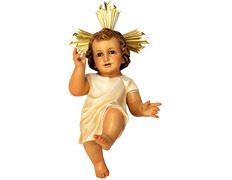
Ref: 2FA615

Ref: 2FA615N4
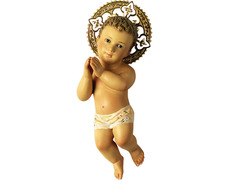
Ref: 2FA556N4

Ref: 2FA185

Ref: 2FA289

Ref: 59B5906

Ref: 92B0P1F

Ref: 59B12121

Ref: 92B0PXF

Ref: 59B6708

Ref: 92B0P1P

Ref: 92B0PXP

Ref: 59B10852
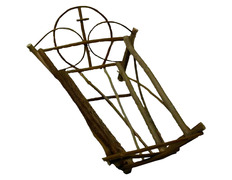
Ref: 33F0JC
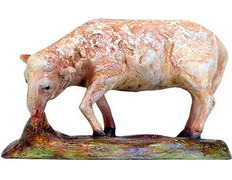
Ref: 2FA267A12
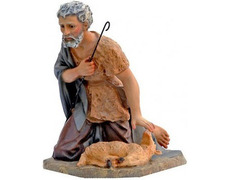
Ref: 2FR5041A12
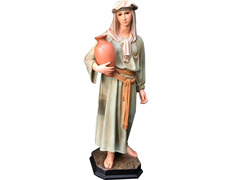
Ref: 2FR5020A12
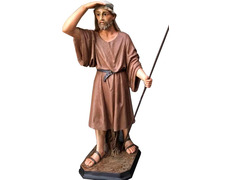
Ref: 2FA247A12
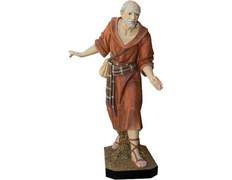
Ref: 2FA270A12
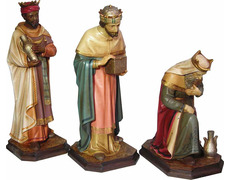
Ref: 2FA225A12
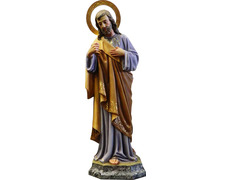
Ref: 2BA207SJ
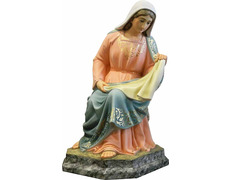
Ref: 2BA207VM
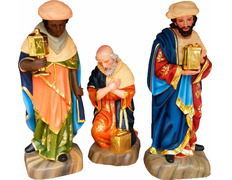
Ref: 69B016
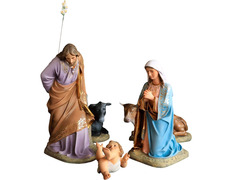
Ref: 2FR514501N1-50

Ref: 92FP581

Ref: 92FP360

Ref: 92F0P9

Ref: 92FP263

Ref: 59B11583

Ref: 59B9926

Ref: 92FP312

Ref: 7B111

Ref: 92FP234

Ref: 59F12747

Ref: 59B9923
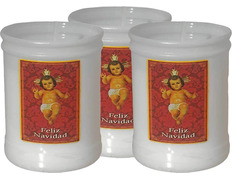
Ref: 3F64A
Christmas is the liturgical season in which the Church celebrates the mystery of the Incarnation, God becoming man in the person of Jesus.
This period, starting on Christmas Eve and ending with the feast of the Baptism of the Lord (Sunday after the Epiphany), is an invitation to meditate on the humility of a God who assumes human nature for the salvation of humanity. Our God gives His Son so that all men and women can obtain forgiveness for their sins and achieve eternal life.
This celebration is deeply linked to the liturgical season of Advent, a period of preparation leading up to Christmas. During Advent, the Church encourages the faithful to prepare for the arrival of Jesus with hope and penance. While Advent has a reflective and expectant character, Christmas is an explosion of joy and light, represented in the ornaments and colors used during this time. Jesus is the light of the world, and during Christmas, He is very present in liturgical celebrations and Christian homes.
Liturgical colors are important symbols within the iconography of the Catholic Church. The colors of priests' vestments and the altar textiles remind the faithful of the liturgical season they are experiencing and, consequently, the central teachings and values of that season.
The predominant liturgical color during Christmas and Epiphany is white, sometimes accompanied by golden tones. These colors are rich in symbolism and are used in priestly vestments, altar cloths, and other liturgical ornaments.
White: Represents purity, light, and the joy of the Incarnation. It is the color of heavenly glory worn during Christ's birth's solemnity.
Gold: Symbolizes the royalty of Christ and the spiritual wealth His coming brings to the world. This tone emphasizes the celebratory and magnificent nature of Christmas. In many cases, gold replaces white in priestly ornaments.
These colors are used throughout the Christmas festivities, including the Solemnity of Mary, Mother of God, and the Epiphany, enhancing the joy and solemnity of this liturgical season.
Liturgical ornaments are fundamental in conveying the joy and happiness of Christmas celebrations. Parishes and churches are adorned with Christmas-themed ornaments to create a special atmosphere during these important days.
The most important priestly vestments, cloths, and altar linens during this liturgical season include:
This is the outer vestment worn by the priest during the Eucharist. Chasubles are often white or gold at Christmas, decorated with symbols like stars or nativity scenes. Central stoles can also transform a simple chasuble into a festive Christmas liturgical garment.
A long band worn by the priest over the shoulders. During Christmas, it is typically adorned with Christmas motifs such as the Christogram or the manger. It symbolizes priestly authority and service to the community.
The altar cloth plays a central role in decorating altars. It is one of the most visible textile elements for Mass attendees. While white is the traditional color, other options exist.
Altar cloths frequently include embroidery with Christmas symbols like angels, trees, or stars.
Lectern cloths and pulpit cloths, also known as lectern covers or pulpit covers, are ornaments used to decorate lecterns and pulpits at the altar. They are available in various liturgical colors, just like other ornaments.
Christmas lectern cloths are typically white and gold. Their embroidery and decorations feature Catholic Christmas motifs such as angels, stars, nativity scenes, etc.
Liturgical ornaments are often complemented by representations of the Nativity of Jesus. These representations, known as Nativity Scenes, Mangers, or Cribs, are a deeply rooted tradition in parishes and homes.
Churches, businesses, organizations, and public spaces regularly display large-format figures, such as statues measuring 120 cm (47.24 in). Large figures are essential in these environments so everyone can view them from different angles.
At home, smaller Nativity Scene figures are typically used, ranging from 20 cm (7.87 in) to 30 cm (11.81 in). These models are designed for family enjoyment and closeness.
Despite their size differences, all Nativity Scenes visually represent the mystery of the Incarnation and the joy and hope brought by Jesus's arrival in the world. They invite the faithful to reflect on the significance of Christ&rsquo's birth.
The most notable figures in Christmas Nativity Scenes include:
He is the heart of the manger. Baby Jesus represents divine humility and God's closeness to humanity. His small and vulnerable figure is a reminder of God's infinite love.
Baby Jesus symbolizes hope and joy, depicted as a newborn. His birth in Bethlehem marks a new beginning for humanity, just as a baby represents a new beginning for a family.
The Virgin Mary is another essential figure in a Nativity Scene. As the mother of Jesus, she represents unconditional love for God and her family.
Mary&rsquo's figure is often shown sitting or kneeling, radiating affection and protection for her beloved Son.
Mary is considered a model of faith and charity. Her full acceptance of God's plan and conceiving Jesus through the Holy Spirit exemplify surrender and trust in the divine will.
Saint Joseph is the earthly father of Jesus and the husband of the Virgin Mary. His figure is significant in the Catholic Church as he symbolizes obedience, protection, and care for the Holy Family.
Saint Joseph played a fundamental role in raising and educating Jesus. Despite not being His biological father, Joseph fully embraced his fatherhood by accepting and caring for Jesus, giving Him His name, and recognizing Him as His Son.
The saint's figure is typically depicted standing with a staff in hand, in a pose resembling a shepherd watching over his flock.
The ox and the donkey emphasize the profound humility with which the Son of God entered the world, highlighting the simplicity and love that characterize His birth.
These two animals symbolize all creation yearning for the Messiah’s arrival, representing not only nature but also humanity’s desire for redemption.
All living beings, regardless of their understanding, recognize the newborn as the Son of God, showcasing that His arrival is a universally significant and deeply anticipated event.
The Three Wise Men (Melchior, Gaspar, and Balthasar) followed the Star of Bethlehem to find the Messiah.
The Three Kings, representing the three continents known at the time, symbolize that Jesus' salvation is for all humanity.
By worshiping Baby Jesus and offering gifts, they acknowledge His divine, human, and royal nature. According to the Gospel of Matthew, they provided:
Gold: symbolizing Jesus’ royalty.
Frankincense: representing His divinity.
Myrrh: alluding to His future suffering and death.
The Star of Bethlehem and Angels share a similar purpose, communicating the birth of Jesus to the Wise Men and shepherds.
The star guided the Wise Men to the manger, while the Angel announced the birth of the Son of God to the shepherds.
The shepherds, representing common people, recognize Jesus as the Savior. They are often depicted carrying lambs, symbolizing their devotion to God.
Decorating the Christmas tree with Catholic ornaments is a meaningful way to celebrate the season and keep the true Christmas spirit alive. Here are ways to decorate your tree with traditional elements that reflect the Christian faith.
Christmas tree ornaments are classic decorations. Most Christmas trees are filled with ornaments of various sizes and colors.
Christian faithful have adapted traditional ornaments to give them a more appropriate look for the season.
Nativity-themed Christmas tree ornaments are a beautiful symbol of Jesus’ arrival.
These ornaments often include figures or images of the Holy Family.
The Star of Bethlehem symbolizes the divine guidance that led the Wise Men to Jesus' manger. This Christmas ornament is another essential decoration on any Christmas tree.
The Star of Bethlehem typically has a prominent place on the tree, often positioned at the top.
The Star of Bethlehem is usually the finishing touch to a tree’s decoration.
The Angels from the Nativity Scene represent the announcement of Jesus' birth.
They are symbols of good news and are often present on Christmas trees in parishes and homes.
Besides Christmas tree ornaments, other decorative elements can be hung on walls to add a festive touch.
Balcony banners, tapestries, hangings, or flags are Catholic-themed items designed to be hung in indoor and outdoor spaces.
Although these terms are often used interchangeably, in some regions, tapestries are typically referred to as items made from materials suited for indoor spaces, such as homes or parishes.
Conversely, balcony banners, hangings, or flags usually refer to pieces crafted for outdoor use, made from materials capable of withstanding weather conditions.
Regardless of their construction, Christmas balcony banners share a common characteristic: their design. They are all adorned with Christmas imagery, such as Nativity Scenes, the Holy Family, the Wise Men, the Manger, etc.